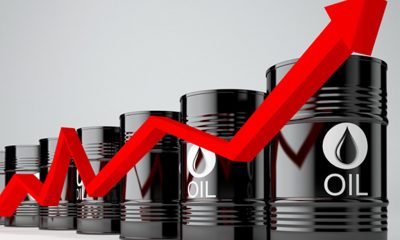The Organization of the Petroleum Exporting Countries (OPEC) and its allies have reaffirmed their commitment to continue cutting a total of at least 1.3 million barrels per day as crude oil prices fell nearly 6 per cent on Wednesday, the biggest one-day sell-off since September 2022.
The apparent weakness was a wake-up call for oil prices, and their acceleration to below $80 making the $100 price tag questionable.
Additionally, OPEC has kept its oil production policy unchanged as widely expected and is not expected to meet again until November 26.
West Texas Intermediate crude, or WTI, traded in New York for November delivery, traded down by nearly 6 per cent to settle at $84.22 a barrel. Benchmark US crude oil prices earlier hit a one-month low of $84.17 and fell 7 per cent on the week.
READ ALSO: NNPC Crude Oil Theft: NSA Ribadu and his 400,000 barrels daily loss?
The other factor behind Wednesday’s dramatic drop in crude oil prices was a seasonal decline in US demand – a fact that appears to have been lost on those betting on an oil price rally in the coming weeks. Last quarter as well as the continued manipulation and indefinite promises of the OPEC market.
The International Energy Agency wrote in its August 2023 report that “global oil demand is at record levels” and is expected to increase this year but added that the faster adoption of electric vehicles and renewable energy, as well as the West’s separation from Russian gas, will hasten peak demand for Crude oil before the end of the decade.
Some analysts expect OPEC will have to cut output more than necessary to support prices, as rising interest rates raise concerns about an economic slowdown and supply from overseas.
Saudi Arabia, the world largest supply of crude and Russia on Wednesday affirmed their commitment at a joint meeting to continue cutting a total of at least 1.3 million barrels per day from the two countries’ daily output until the end of the year.
READ ALSO: Fuel subsidy returns as crude oil nears $100 pbd, FX crisis deepens
A recent government report also showed U.S. gasoline stocks rose nearly 6.5 million barrels last week, the biggest increase in nearly two years, as refiners’ optimized oil processing to take advantage of higher rates.
Meanwhile, the combination of weaker US economic data and falling yields from highs has allowed risk assets to breathe a sigh of relief and recover cautiously from cycle lows.
Consequently, short sellers took centre stage in the oil market on sentiments that energy-price inflation over the past three months will likely force the Federal Reserve to hold interest rates steady for the foreseeable future.
That pushed the dollar to an 11-month high, further weakening the finances of other countries as well as international demand for crude oil and other commodities denominated in U.S. currency.

 Crime1 day ago
Crime1 day ago
 Editorial5 days ago
Editorial5 days ago
 Agribusiness3 days ago
Agribusiness3 days ago
 Business7 days ago
Business7 days ago
 Business4 days ago
Business4 days ago
 Featured4 days ago
Featured4 days ago
 Agribusiness4 days ago
Agribusiness4 days ago
 Latest4 days ago
Latest4 days ago












